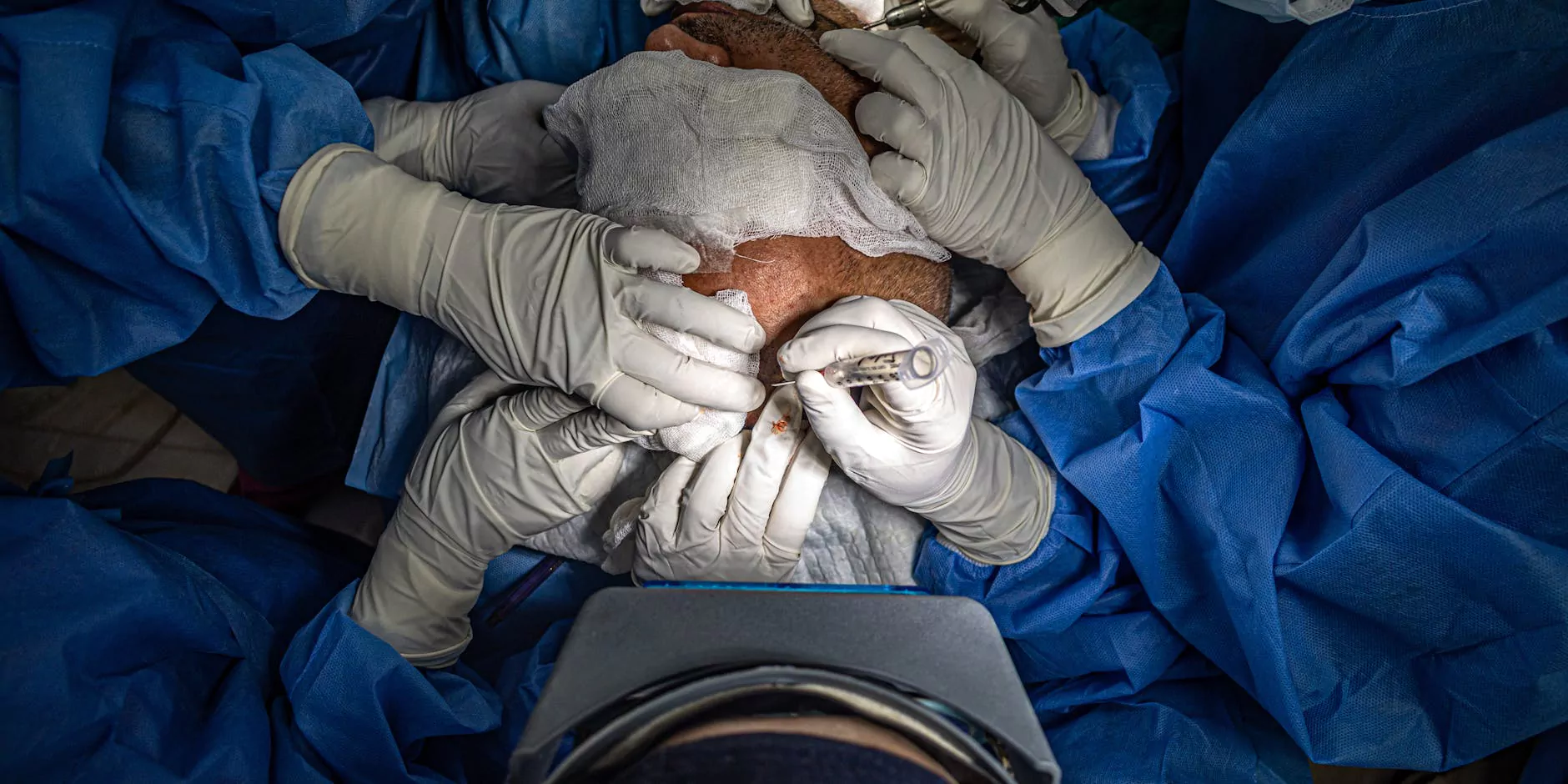Understanding Endometriosis Excision Surgery: A Comprehensive Guide

What is Endometriosis?
Endometriosis is a chronic and often painful condition in which tissue similar to the lining inside the uterus, known as endometrial tissue, begins to grow outside the uterus. This can cause significant discomfort, fertility issues, and other complications. Women suffering from this condition experience symptoms that can severely impact their quality of life.
The endometrial-like tissue can be found on the ovaries, fallopian tubes, and other areas within the pelvis. In some cases, it may even spread beyond the pelvic organs. The exact cause of endometriosis remains unknown, but various factors, including genetics and immune system disorders, may contribute to its development.
Symptoms of Endometriosis
The symptoms of endometriosis can vary from mild to severe and may include:
- Painful periods (dysmenorrhea)
- Pain during intercourse
- Pain with bowel movements or urination
- Excessive bleeding (heavy periods or bleeding between periods)
- Infertility
- Other gastrointestinal issues (bloating, diarrhea, constipation)
It's important to note that the severity of the symptoms does not necessarily correlate with the extent of the condition. Some women may have mild endometriosis but experience severe symptoms, while others with advanced stages may have mild symptoms.
Diagnosis of Endometriosis
Diagnosis of endometriosis can be complex and often involves a combination of:
- Pelvic exams: A thorough examination to detect cysts or scars.
- Ultrasound: Imaging tests to identify cysts associated with endometriosis.
- MRI: Imaging to provide detailed pictures of the organs and tissues.
- Laparoscopy: A surgical procedure used to view the pelvic organs directly and confirm a diagnosis.
The Role of Endometriosis Excision Surgery
Endometriosis excision surgery is a surgical procedure aimed at removing endometrial tissue that has grown outside the uterus. This procedure is often recommended when other treatment options have failed or in cases of severe pain and fertility issues.
Why Choose Excision Surgery?
The primary goal of endometriosis excision surgery is to alleviate symptoms and improve the quality of life for patients. Unlike ablation techniques, which destroy endometrial tissue, excision involves careful removal of the tissue, allowing for a more comprehensive approach to treatment. This method helps to ensure that the endometriosis does not return and can provide a better chance of improving fertility.
Benefits of Endometriosis Excision Surgery
Some of the key benefits include:
- Reduced Pain: Many women experience a significant decrease in pelvic pain after the procedure.
- Improved Fertility: Women with endometriosis may find that their chances of conception improve after excision surgery.
- Preservation of Surrounding Organs: Excision allows for the careful removal of tissue while preserving healthy surrounding organs, reducing risk of complications.
- Possibility of a More Comprehensive Approach: Surgeons can assess the extent of endometriosis more effectively during excision, which can lead to a tailored treatment plan.
Who is a Candidate for Endometriosis Excision Surgery?
Not every woman with endometriosis will be eligible or need excision surgery. Good candidates typically include:
- Women with moderate to severe endometriosis not responding to medication.
- Patients experiencing debilitating symptoms impacting daily life.
- Women who are facing infertility and wish to conceive.
- Individuals looking for a long-term solution to manage endometriosis.
The Surgical Procedure: What to Expect
Endometriosis excision surgery is typically performed under general anesthesia. Here is a general overview of what can be expected from the surgery:
- Preparation: Your doctor will provide you with pre-surgical instructions, including what to eat, medications to avoid, and any necessary testing.
- During Surgery: The surgeon will make small incisions and use a laparoscope, a thin tube with a camera, to locate and excise endometrial tissue. This method is less invasive than traditional open surgery.
- Recovery: Post-operative care is crucial. Patients are monitored shortly after surgery, and most are able to go home on the same day or the next day.
- Follow-up: A follow-up appointment is essential to monitor healing and discuss ongoing treatment options.
Post-Operative Care and Recovery
Recovery from endometriosis excision surgery can vary from patient to patient, but several guidelines can help facilitate a smooth recovery:
- Rest: Ensure you get plenty of rest during the first few days post-surgery.
- Follow Dietary Recommendations: Gradually reintroduce solid food as tolerated; consider a balanced diet rich in nutrients to aid recovery.
- Pain Management: Follow your surgeon's advice on pain relief medication to manage discomfort effectively.
- Limit Physical Activity: Avoid vigorous exercises and heavy lifting until cleared by your doctor.
The Importance of Choosing a Qualified Surgeon
Choosing a qualified and experienced surgeon is critical for successful endometriosis excision surgery. It's essential to look for:
- Board Certification: Ensure the surgeon is certified in obstetrics and gynecology.
- Specialization: Look for surgeons who specialize in endometriosis treatment and surgical techniques.
- Experience: It's advisable to choose a surgeon who has performed a significant number of excision surgeries.
- Positive Reviews: Research patient testimonials and reviews to gauge satisfaction levels and experiences.
Long-term Management of Endometriosis
After endometriosis excision surgery, ongoing management of endometriosis symptoms is vital. Common approaches include:
- Hormonal Treatments: Hormone therapy may be prescribed to help regulate menstrual cycles and minimize symptoms.
- Lifestyle Modifications: Regular physical activity, a healthy diet, and stress management techniques can play a role in long-term health.
- Regular Follow-up Visits: Maintain regular check-ins with your healthcare provider to monitor your health and any recurring symptoms.
In conclusion, endometriosis excision surgery offers a promising option for individuals suffering from the debilitating effects of endometriosis. By understanding the condition, surgical procedure, and post-operative care, patients can make informed decisions and improve their quality of life.
For more information, consider visiting Dr. Seckin's website, where you can find resources and guidance on managing endometriosis.



